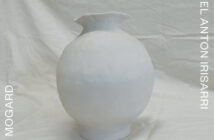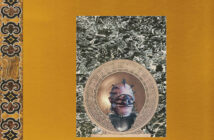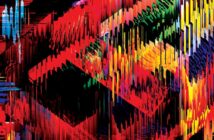
Efforts of a musical sort have as a virtue the ability to focus the attention in a meditative manner. Little comfort, though, if the possibility of breaking this format is not a constant as well. It’s out of concern for the latter that, at least in part, Frans de Waard and Rutger Zuydervelt took up with each other. Their exchange begins over a brief piece for improvised acoustic lapsteel guitar from which, using various processing techniques, both maciate and extract myriad short segments, twenty to be exact, and then, individually, reshuffle and reprocess them into two singular works some twenty minutes in length.
The nature of the exchange is never such that the implicit distance and antagonism between them erupts into an unbridled explosion of fury; it’s often quelled or altogether subordinated to a principle of maximum yield, to a certain calculation of effectiveness. Consequently the degree to which the two succeed in tearing away from their own desire and open up another sort of sovereignty is minimal at best. Their aural signatures remain readily discernible, and in this the works seem oddly meretricious. Where elsewhere the methodological approach curtails the albums effectiveness, here it’s of some aid, shaping the obviousness of particular elements (the aura of abandoned warehouses and desolate wastelands of Zuydervelt; the austere electronic climates punctuated by rapid fire chatter from de Waard) into complex collages of miniscule textures that betray focussed intensity and concentration.
All the while, the improvised acoustic lapsteel, though heavily contorted, maintains its harmonic and melodic sensibility over the course of the album, and it generates a refreshing quintessence in and around which the subsequent manipulations and striations can unfold. Regardless, it’s still the craft that makes the difference more than the novelty of the lapsteel’s sound. Waard’s selection features a swelling midrange and impressive timbral depth. Zuydervelt, on the other hand, uses waxy grains and textures of a copper burnish in what is easily one of his most bodily robust and unified compositions to date.
Max Schaefer



